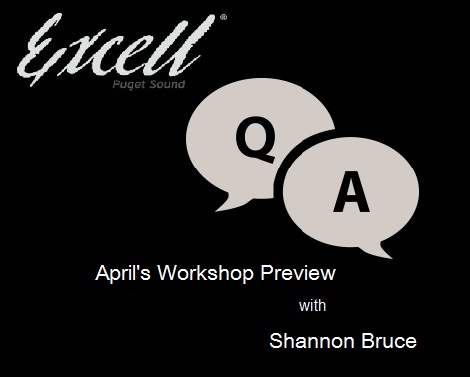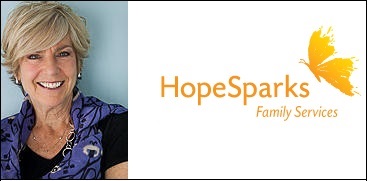
April’s workshop is called “Heroic Leadership is Dead, Long Live the Team.” The recap of the workshop states that the “Team of Teams” approach can help executives build their teams and that Conversational Intelligence™ is one methodology that will provide the “how-to.”
Here, Shannon Bruce answers some questions about the upcoming workshop and the connection between “Team of Teams” and Conversational Intelligence™.
EXCELL: Can you please clarify what you mean by “Heroic Leadership?”
SHANNON BRUCE: One of the biggest challenges I see for executives is that there isn’t enough of them to go around. Their role can no longer be the “Expert” or “Chief Problem Solver” because a single individual cannot come up with the answers to all the problems that exist in business today. Organizations need to be adaptable and continuous process improvement needs to be seen as a responsibility within all levels of the company — not just the C-Suite. So, the goal of this workshop is to shift the executive’s role from being the “Hero” to being the “Leader of Teams”.
EXCELL: What is a “Team of Teams” approach to leadership?
SHANNON BRUCE: We are all familiar with the traditional “Command and Control” structure where there is top-down, hierarchical management. Companies also are often organized in a “Command of Teams” structure where teams work together under the authority of the Command structure.
The “Team of Teams” approach is new. It is a loosely networked approach to leadership where teams form across departments, and across levels, to engage in meaningful conversations around real business issues. It allows for the sharing of information in a cross-functional way so executives can shift their role and be responsible for the “big picture,” such as mission, vision, values, and strategic initiatives. As long as there is clear and common purpose in the organization, employees are empowered to execute. This frees up the executive to fulfill a new role, which we will be talking about in the workshop.
EXCELL: What are the challenges you see in organizations today that could be addressed by a “Team of Teams” approach?
SHANNON BRUCE: Challenges that exist in the organizational structure aren’t because C-Suite executives aren’t doing a good job. It’s largely the result of the 19th and 20th Century business model of “Command and Control,” which was developed to solve the problems of order and predictability. Organizations were structured this way to produce efficiency, and managers were paid to think while employees were paid to produce.
We are now in a business climate where ideas and solutions need to be generated at all levels within the organization and across departments. Employees need to be able to think critically, take initiative, and be able to work among teams in a way that is agile and adaptable. They also need to be resilient, and be able to give and receive feedback. In many companies, this is not happening effectively.
The “Team of Teams” structure provides a mechanism to create shared consciousness among cross functional teams. It encourages teams to interact and communicate. As long as there’s a sense of shared consciousness, employees at all levels become a part of the solution and are empowered to execute.
EXCELL: Why are members asked to prepare for this workshop by taking an assessment about trust and conflict?
SHANNON BRUCE: A high level of trust is required for creating a “Team of Teams approach.” It is the foundation that supports healthy team interaction. Especially when you engage people at all levels and across departments, everyone has a different point of view so conflict is a natural by-product. The leadership characteristics that support trust and conflict are essential and must be clearly understood in order to develop and foster and an environment for healthy and cohesive teams.
EXCELL: What is Conversational Intelligence™ (C-IQ) and how does this support a “Team of Teams” approach?
SHANNON BRUCE: Judith Glaser, the founder of C-IQ™ and author of Conversational Intelligence says, “The quality of the culture depends on the quality of the relationships, which depends on the quality of the conversations.” This means that, to get to the next level of greatness, leaders need to have useful conversations and also understand how these conversations build trust, or worst case, unintentionally erode trust.
This matters because 90 percent of conversations in companies “miss the mark.” Leaders get stuck in two levels of conversation that have blind spots of “tell, yell and sell” or “the need to be right.” But there’s another level that’s vital to the “Team of Teams” approach. This level allows employees to partner together effectively which builds trust and supports healthy conflict to invite innovation, discovery and empowerment. Conversational Intelligence™, therefore, provides the “how-to’s” that allow executives to develop a “Team of Teams” approach.
EXCELL: What are some of the skills or tools that members will learn about in this workshop?
SHANNON BRUCE: This is really going to be an experiential and fun workshop! Members will have a chance to understand the “Three Levels of Conversation” and get an understanding of where they are on the “Conversational Dashboard.” Members will discover how to “prime the environment” for trust by being a part of the “Rules of Engagement” conversation. There are several more but I’ll save these for the workshop.
EXCELL: Why are CEO’s asked to attend the workshop in teams?
SHANNON BRUCE: The best way to practice Conversational Intelligence™ is to have “real” conversations with other employees on the team. In the workshop, we use the tools of Conversational Intelligence™ to experience the impact and outcomes of different types of conversations. Why? Because conversations evoke certain feelings: you either feel energized and engaged, or shut-down and withdrawn. Participants will be enlightened to experience how simple, yet powerful, these tools will be in changing the dynamics of their relationships and culture. It really becomes a foundation for a positive shift from “I/Me” to “Me/We”.
EXCELL: How will members know if they have created a successful “Team of Teams” organization, one that is Conversationally Intelligent™, with a healthy foundation of high trust and effective conflict handling?
SHANNON BRUCE: Conversations among cross functional teams begin to take place and employees feel safe to partner with one another. A new found synergy emerges and team members will want to interact with one another. There will be a new and inspired type of conversation where team members share and discover new insights that will help them perform their jobs better and/or provide positive input to needed changes. Team members will willingly seek out other opinions, share their points of view, and give and receive feedback without fear. Conversations will be alive and energizing and team members will aspire to new levels of greatness that ultimately produce improved results. To me, that’s an environment others will want to work in. Additionally, it frees up the CEO to be the catalyst for growth and development in their people and their organizations.
EXCELL: What are the changes that members will need to make to ensure success?
SHANNON BRUCE: This workshop is a continuation of Jim Hessler’s January and February programs, which were about how to create smarter organizations. This an opportunity to use practical skills to create a learning environment that allows for transparency and creates the “Me/We” that’s needed for the “Team of Teams” approach. When our members discover how to listen, connect, and ask questions they will also empower their teams and employees to the next level of greatness. To me there is no greater impact on the organization, the community, and beyond, for a leader who can “take care of hearts while also taking care of business.”
My aspiration for everyone who attends is to leave empowered to create a caring environment that fosters candid conversations!
If you are looking for more information about this program, please refer to the pages on our website for the Seattle Group, South Sound Group, and Kitsap Group.
And please remember to participate in our on-line community by clicking on the icons below and following us on Facebook, Twitter, and LinkedIn. From there, you can browse our articles as they post and let us know which industry pieces that you find most valuable.





